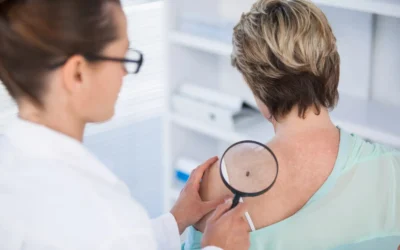A new analysis from the University of Michigan Institute for Healthcare Policy and Innovation (IHPI) has placed a striking monetary value on cancer screenings, estimating they have saved the U.S. healthcare system at least $6.5 trillion over a 25-year period. While the clinical benefits of early detection have been long established, this new research takes it further, quantifying how early-stage cancer diagnosis doesn’t just save lives—it also delivers enormous financial savings by reducing the need for complex, late-stage interventions.
The implications of this data are profound. As the U.S. population ages and cancer risk increases, preventive care strategies like screening become even more vital—not just to individual patients, but to the stability of the healthcare system as a whole. This article unpacks the evidence, explains how these savings were calculated, and explores why screening remains one of the most cost-effective tools in medicine.
Table of Contents
The Economic Impact of Early Cancer Detection
The University of Michigan research team analyzed large-scale national cancer data from 1996 to 2020 to understand how trends in staging at diagnosis had shifted. What they found was significant: the proportion of cancers diagnosed at an earlier, more treatable stage had grown, thanks largely to more widespread use of routine screenings such as mammograms, Pap smears, colonoscopies, and low-dose CT scans for lung cancer.
Using a value-based health economic model, the researchers assessed not only the direct medical savings from treating less advanced disease but also the societal value of additional life-years gained by patients diagnosed early. Their analysis yielded a conservative estimate of $6.5 trillion in value generated over 25 years, emphasizing that preventive screening is not just good policy—it’s a high-return investment.
Much of the financial savings stemmed from the fact that early-stage cancer typically requires less aggressive treatment. Patients can often avoid costly chemotherapy regimens, major surgeries, or long-term hospital stays. Moreover, early detection leads to better survival outcomes, reducing both loss of income and long-term care costs. These savings compound when applied to millions of patients.
Early Detection Changes Outcomes: The Clinical View
From a clinical perspective, the rationale behind screening is straightforward. Most cancers follow a progression in which early disease is localized and relatively easier to treat, whereas late-stage cancer has often metastasized, requiring systemic therapy that is both more intensive and less likely to result in a cure.
Take breast cancer as a prominent example. A tumor detected through regular mammography while still confined to the breast has a five-year survival rate of over 99%. Once the cancer spreads to distant organs, survival rates plummet to roughly 30%. The treatment path also diverges sharply. Early detection may lead to lumpectomy and short-term radiation. Late detection, on the other hand, could require mastectomy, multi-agent chemotherapy, reconstructive surgery, and years of follow-up.
This same pattern holds true across many cancer types, from colorectal and prostate to cervical and lung cancers. Early-stage treatment is simpler, less disruptive, and much more likely to result in full recovery.
Cost Comparison: Early vs. Late-Stage Cancer
To illustrate the stark contrast in economic burden, consider the following simplified comparison between early-stage and late-stage treatment costs across several common cancer types:
| Cancer Type | Early-Stage Avg. Cost | Late-Stage Avg. Cost | Primary Cost Drivers (Late Stage) |
|---|---|---|---|
| Breast | $25,000–$40,000 | $120,000–$250,000 | Chemotherapy, mastectomy, long-term hormone therapy |
| Colorectal | $30,000–$50,000 | $100,000–$180,000 | Surgical resection, radiation, systemic chemotherapy |
| Lung | $40,000–$60,000 | $200,000–$300,000+ | Targeted biologics, immunotherapy, hospice care |
| Prostate | $20,000–$35,000 | $90,000–$160,000 | Hormone therapy, radiation, bone metastasis treatment |
| Cervical | $15,000–$25,000 | $80,000–$140,000 | Radical hysterectomy, chemotherapy, extended radiation |
This table underscores why early-stage treatment is not only better for patients but also far more sustainable for the healthcare economy.
How Screenings Have Changed Over Time
Screening guidelines in the U.S. have expanded significantly since the 1990s. Public health campaigns, insurance mandates, and physician advocacy have all contributed to increased uptake. Initiatives like the Affordable Care Act have also ensured that most health insurance plans now cover recommended screenings with no out-of-pocket costs to patients, removing one of the major barriers to access.
Data from the Centers for Disease Control and Prevention show that routine screening rates for breast, cervical, and colorectal cancers have risen steadily over the past two decades. This has directly contributed to the rise in early-stage diagnoses. Similarly, the approval of low-dose CT scans for high-risk smokers has added a new layer of prevention for lung cancer, historically one of the deadliest forms of the disease due to its late presentation.
However, uptake is not uniform. Disparities persist across racial, geographic, and socioeconomic lines. Rural populations, for instance, often lack access to specialists and imaging facilities, while uninsured individuals may delay care due to cost concerns. These gaps reduce the overall effectiveness of screening strategies and perpetuate avoidable mortality.
The Broader Public Health Implications
The broader implications of the $6.5 trillion figure go well beyond the clinical encounter. Early detection through screening reduces strain on hospitals, lowers disability-adjusted life years, and boosts economic productivity by enabling individuals to remain in the workforce longer. It also reduces the need for expensive end-of-life care, which often carries high costs with limited benefit.
This makes preventive screening not just a clinical service but a societal good. For employers, insurers, and government health programs, investing in accessible and equitable screening programs pays significant dividends. Policymakers looking for cost-effective healthcare reforms should prioritize funding for mobile clinics, public awareness campaigns, and expanded coverage.
Where Do We Go From Here?
While the numbers are promising, they also point to an unmet opportunity. Not all eligible individuals are being screened, and not all cancers currently have widely adopted screening protocols. For example, ovarian and pancreatic cancers often go undetected until advanced stages due to the lack of routine tests.
To improve outcomes further, healthcare systems must focus on outreach, education, and innovation. Risk-based screening tailored to individual genetic profiles and AI-assisted diagnostics could improve precision. Expanding telemedicine for pre-screening consultations might reduce barriers in underserved areas.
Moreover, healthcare providers must emphasize continuity of care. Screening is only the first step. Follow-up appointments, diagnostics, biopsies, and treatment must be accessible and navigable to maximize the benefit. Systems that lose patients between screening and diagnosis fail to deliver on the promise of early detection.
Conclusion: Screening Is a Lifesaving, Cost-Saving Strategy
The University of Michigan’s analysis places a measurable economic value on what has long been a clinical truth: early detection through cancer screening saves lives and saves money. The $6.5 trillion in estimated savings reflects not only the reduced cost of treating early-stage disease but also the countless life-years gained and suffering averted.
Yet this value can only be fully realized if screenings are accessible, timely, and acted upon. As we continue to refine our tools for diagnosis and treatment, we must not neglect the foundational role that preventive care plays in public health. The study makes it clear: when cancer is caught early, everyone wins—the patient, the provider, and the nation’s healthcare system.





0 Comments